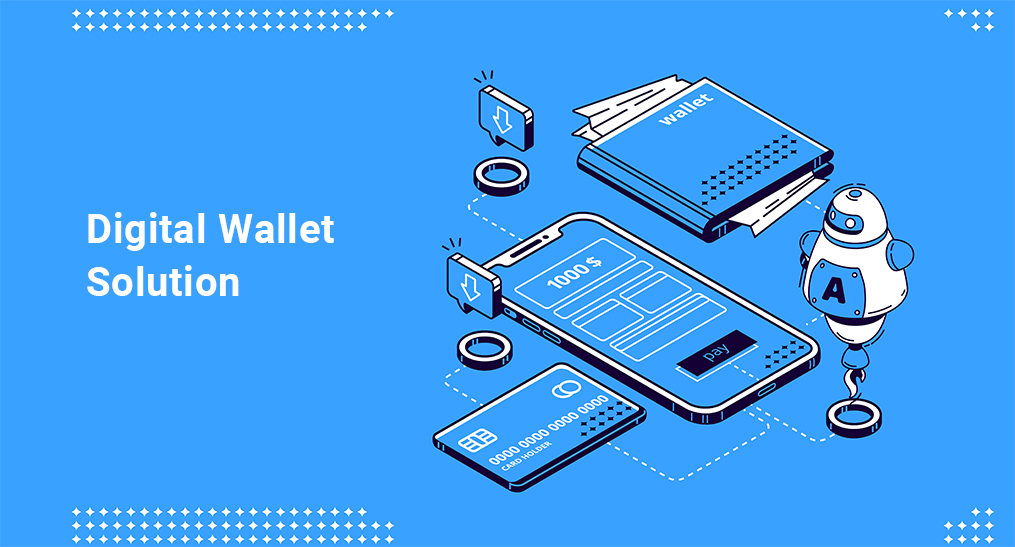-
Research & Analysis
Before diving into development, conduct thorough research and analysis of the current digital wallet landscape. Identify existing solutions, market trends, and potential competitors to understand what features and functionalities are in demand. Gathering insights from target users can also help in crafting a wallet that meets specific needs and preferences.
-
Scope Out the Details of Your Customer Requirements
Understanding customer requirements is crucial for the success of any Digital Wallet Solution. Gather feedback from potential users regarding their expectations and pain points. This can involve surveys, interviews, or focus groups that help clarify what features, interfaces, and functionalities are most important to them.
-
Decide on the Type of Wallet
Determine the type of digital wallet you want to develop. Options include:
-
Closed wallets
These wallets are restricted to specific merchants or services and are made for specific ecosystems or platforms. Examples Paypal, Venmo, Samsung Pay, and more
-
Semi-closed wallets
More flexibility is provided by these wallets, which let users store money from several sources and make purchases inside a particular network or ecosystem. Examples Zelle Pay, Citrus, Paytm, Free Charge, Oxygen, etc.
-
Open wallets
These wallets, which are frequently called multi-currency wallets, give users the flexibility to store several currencies and make purchases from a variety of platforms and retailers.
Examples: Apple Pay, Google Pay, and more.
Choosing the right type of wallet will shape its functionality and usability, so align this decision with your target audience's needs.
-
Prioritize Offering Key Features
To stand out in a crowded market, prioritize essential features such as:
- Peer-to-peer payments
- Bill payments
- Loyalty programs
- Transaction history tracking
- Multi-currency support
Focus on features that enhance user experience and provide real value to customers, ensuring your wallet remains competitive.
-
Offer a Seamless User Experience
A successful Digital Wallet Solution must have an intuitive, user-friendly interface that allows users to complete transactions easily. Key aspects to focus on include:
- Simplified Navigation: Make essential features easy to find with a simple menu and clear labels.
- Personalization: Allow users to customize settings such as language preferences, transaction limits, and alerts for a more personalized experience.
- Fast Onboarding: Minimize the steps involved in registering and verifying accounts to ensure users can quickly get started without unnecessary delays.
By ensuring an easy-to-use design, businesses can reduce user frustration and increase engagement with their Digital Wallet Solution.
-
Learn the Must-Follow Regulations
Every digital wallet must comply with local and international regulations to ensure smooth operation and build trust with users. Familiarize yourself with the regulatory landscape, including:
- Know Your Customer (KYC): Ensure that your digital wallet adheres to KYC requirements by verifying user identities through document uploads and background checks.
- Anti-Money Laundering (AML): Implement measures to detect and prevent fraudulent activities such as money laundering.
- Data Privacy Laws: Ensure the digital wallet complies with data privacy regulations like the General Data Protection Regulation (GDPR) to safeguard user information.
By adhering to regulatory standards, your Digital Wallet Solution can operate legally and build confidence among users and financial institutions
-
Prioritize Security & Compliance
One of the top concerns for any Digital Wallet Solution is security. Digital wallets handle sensitive financial information and are a prime target for cyberattacks. To ensure a safe user experience, developers must implement robust security measures such as:
- Encryption: Ensure all data is encrypted at multiple levels, including in storage and during transactions.
- Two-factor authentication (2FA): Add an extra layer of protection by requiring users to verify their identity through a secondary authentication method, such as an SMS code or biometric recognition.
- Tokenization: Replace sensitive card details with a unique token that is used for transactions, reducing the risk of data breaches.
By prioritizing security, businesses can build trust and protect users from fraudulent activities, helping the wallet gain widespread adoption.
-
Choose the Right Digital Wallet Platform
Selecting the right platform for your Digital Wallet Solution is essential for ensuring scalability, security, and performance. Consider factors such as:
- Customization: The platform should allow for easy customization to meet specific business needs.
- Integration: Ensure the platform can integrate seamlessly with payment gateways, banks, and other financial institutions.
- Scalability: Choose a platform that can grow with your user base and adapt to future technological advancements.
By carefully selecting a robust platform, you can set a strong foundation for your digital wallet.
-
Incorporate Loyalty and Reward Programs
A powerful Digital Wallet Solution should go beyond just transactions and add value through features like loyalty programs, discounts, and cashback rewards. By integrating a rewards system, businesses can incentivize users to stay engaged and make more frequent transactions.
- Loyalty Points: Allow users to accumulate points for every transaction they make, which can be redeemed for discounts or offers.
- Partner Discounts: Collaborate with retail partners to offer exclusive deals and promotions for wallet users.
- Cashback Offers: Provide cashback for specific transactions, giving users a tangible benefit for using the wallet.
These additional features encourage brand loyalty and differentiate your digital wallet from competitors.
 Fund Transfer Subscribers can transfer funds to other mWallet subscribers as well non-mWallet users outside the network.
Fund Transfer Subscribers can transfer funds to other mWallet subscribers as well non-mWallet users outside the network. Bill Pay Easy to receive, pay and track your bills with maximum control and flexibility.
Bill Pay Easy to receive, pay and track your bills with maximum control and flexibility. Merchant Payments Fast, secure and brings total customer satisfaction.
Merchant Payments Fast, secure and brings total customer satisfaction. Bank Transfers To transfer their funds from bank account to mWallet and vice versa without having to visit their bank branch.
Bank Transfers To transfer their funds from bank account to mWallet and vice versa without having to visit their bank branch. NFC Payments Secure and innovative solution for retail and other mWallet services.
NFC Payments Secure and innovative solution for retail and other mWallet services. Mobile/mTopup mTopUp enables telcos to allow mobile wallet users to quickly and efficiently recharge prepaid account of a mobile phone user via mobile phone anytime, anywhere.
Mobile/mTopup mTopUp enables telcos to allow mobile wallet users to quickly and efficiently recharge prepaid account of a mobile phone user via mobile phone anytime, anywhere. NFC Ticketing mWallet system that lets commuters tap and go with digital tickets.
NFC Ticketing mWallet system that lets commuters tap and go with digital tickets. NFC Retail Shopping A perfect alternative to debit/credit card/sodexo and food coupons for retailers, shopping malls and corporates.
NFC Retail Shopping A perfect alternative to debit/credit card/sodexo and food coupons for retailers, shopping malls and corporates. Pay Parking No need to worry about coins, use your next generation mWallet.
Pay Parking No need to worry about coins, use your next generation mWallet. Promotion and Loyalty It's simpler and more rewarding. Transforms your existing system to relevant marketing compaigns.
Promotion and Loyalty It's simpler and more rewarding. Transforms your existing system to relevant marketing compaigns. Merchant Deals System that offers the best retail shopping discount to end users.
Merchant Deals System that offers the best retail shopping discount to end users. School Fee The service enables mobile wallet users to pay fee for their children or other children studying in school or college.
School Fee The service enables mobile wallet users to pay fee for their children or other children studying in school or college. Subordinate Wallet Merchants/Channels can authorize their subordinates to use single wallet.
Subordinate Wallet Merchants/Channels can authorize their subordinates to use single wallet. Data Wallet Data Wallet creates a new shopping experience for the users to buy Internet data plans from anywhere and anytime.
Data Wallet Data Wallet creates a new shopping experience for the users to buy Internet data plans from anywhere and anytime. USSD Survey The app gives real time analysis of feedback, survey or poll
USSD Survey The app gives real time analysis of feedback, survey or poll


